Barbell drag curls ranked very highly on our list of bicep exercises because they’re an exceptional movement for strengthening the biceps since they encourage you to use good form.
Unlike with stand up straight bar curls, it’s virtually impossible to swing the weight up with your shoulders, back, or legs when you have to drag the bar up your body.
This tutorial demonstrates the proper drag curl form and then discusses the benefits of incorporating drag curls—a truly great barbell bicep exercise—into your workout routine. Finally, we’ll finish with the drag curls vs regular curls debate and an FAQ.
Related: Back and biceps workout
Barbell drag curl exercise details
- Main Muscles: Biceps brachii
- Secondary Muscles: Brachioradialis, brachialis, forearm flexors
- Exercise Type: Strength
- Exercise Mechanics: Isolation
- Difficulty Level: Beginner
- Equipment Needed: Barbell, weight plates
How to do drag curls correctly
- Load an appropriate amount of weight onto a barbell. For greater convenience, use a fixed bar.
- Grab the bar just outside shoulder width and stand up straight.
- Drag the bar up your body by moving your hands toward your shoulders while simultaneously dragging your arms behind your torso.
- Keep lifting until the undersides of your forearms press up against your biceps. Avoid shrugging your shoulders to lift the barbell higher.
- Hold the contraction for a moment and then lower the weight under control until your elbows are fully locked out.
- Perform 3-5 sets of 8-12 reps in total.
Drag curl benefits
There are numerous benefits of the drag curl, the main plus point being that it’s a great movement for building the bicep peak. Here’s what else you can expect to enjoy when you make this exercise part of your routine.
Better bicep peaks
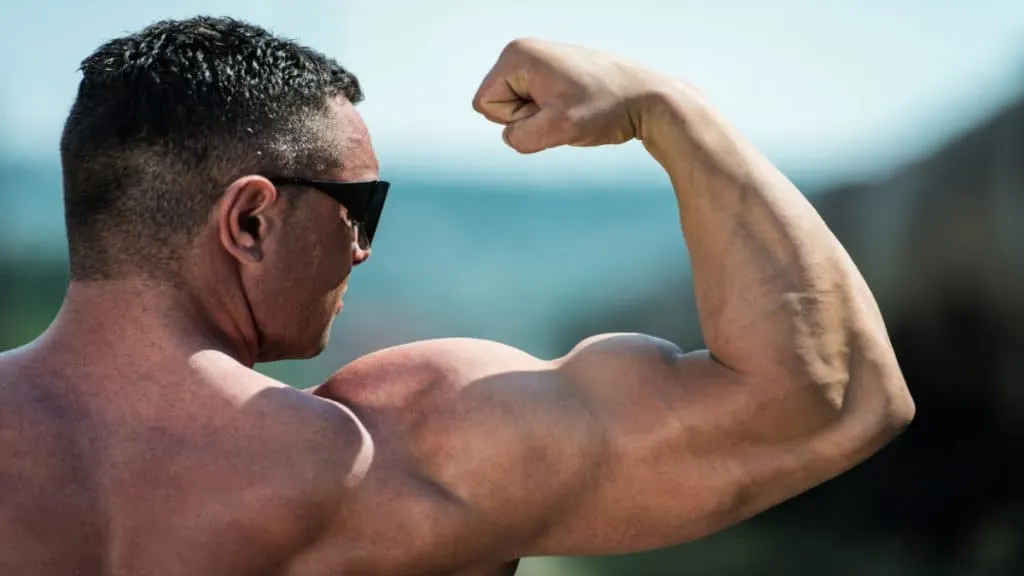
The body drag curl helps to build better bicep peaks because it emphasizes the long head of the biceps (see our long head bicep workout guide for more exercise ideas). This is because by dragging your elbows behind your torso, you’re naturally shifting more of the tension onto the outer muscle fibers of the biceps, which is the area that’s responsible for the peak.
Improved lifting technique
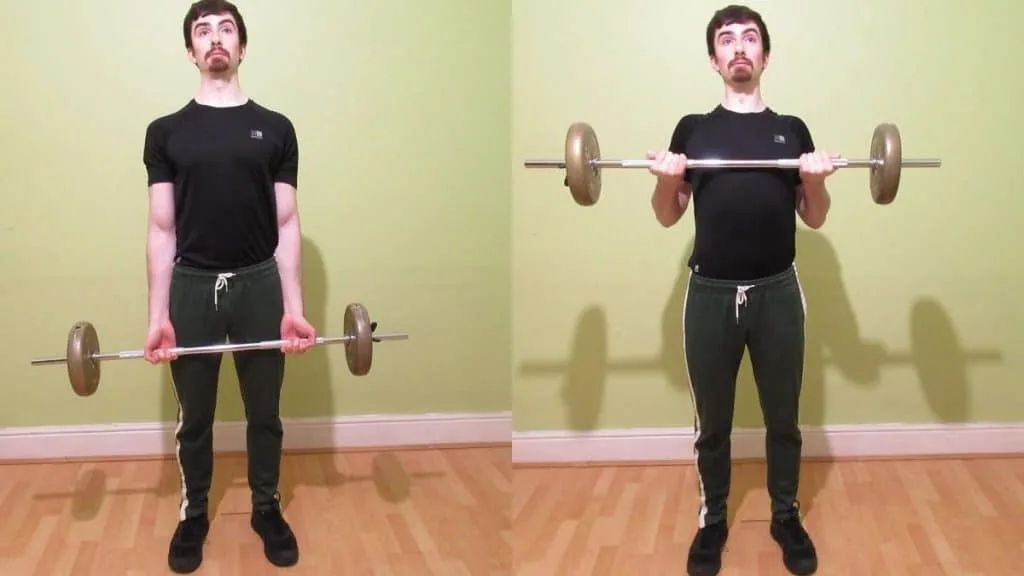
Many lifters swing the weight up with their shoulders, legs, and back muscles during regular curls, which robs their biceps of tension. [1] However, cheating in this way isn’t possible with the bicep drag curl because the bar is so close to your body, and so you can’t use your deltoids and Co to generate momentum.
Just be careful not to shrug the weight up with your traps. While it’s crucial to get a full range of motion, there’s also no advantage to lifting the barbell higher with your traps when your biceps are already maximally contracted.
Intense muscle pump

Barbell drag curls become progressively harder as you complete the rep. This naturally means that the movement is most challenging when your biceps are maximally contracted. Ultimately, you’ll receive a stronger muscle pump, compared to similar exercises, because it’s repeated muscular contractions that actually generate the pump in the first place.
Make sure to squeeze your biceps as hard as you can at the top of each rep in order to generate the strongest contraction.
Drag curls vs regular curls
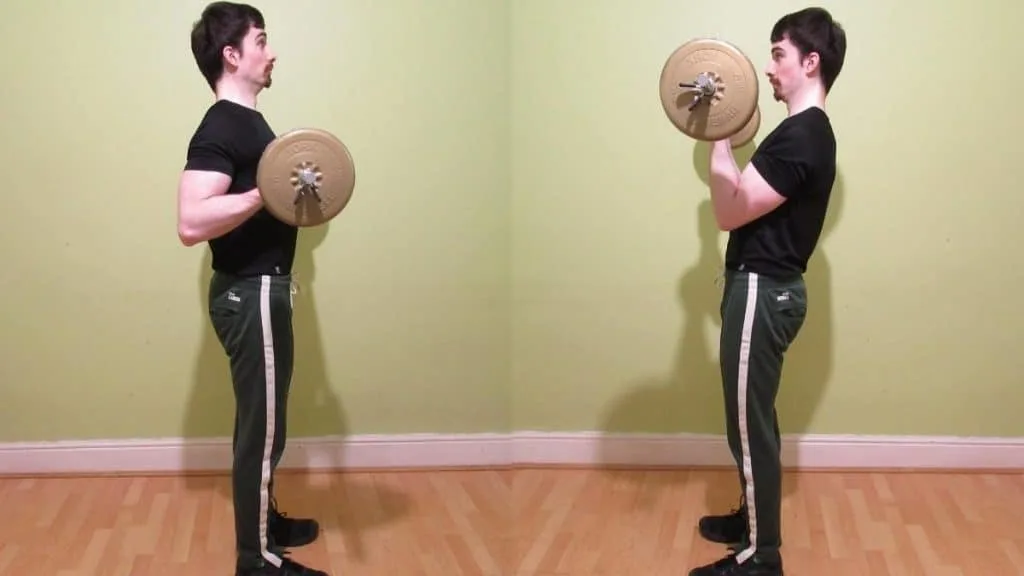
- Drag curls provide better bicep isolation because it’s harder to cheat the weight up when the bar is close to your body.
- Drag curls emphasize the long head more than regular curls and are thus better for developing taller bicep peaks.
- Drag curls are most challenging at the top of the rep, whereas bicep curls pose the most difficulty in the middle of the exercise when your elbows are at a 90-degree angle.
- You can lift heavier weights on regular curls than on bicep drag curls.
You can also click the link to see our drag curl vs spider curl comparison.
Drag curls make a great addition to a bicep superset workout routine because they’re much harder than regular curls, meaning that you can pump out some barbell curls after you’ve done your drag curls to get a more intense workout.
Drag curl variations
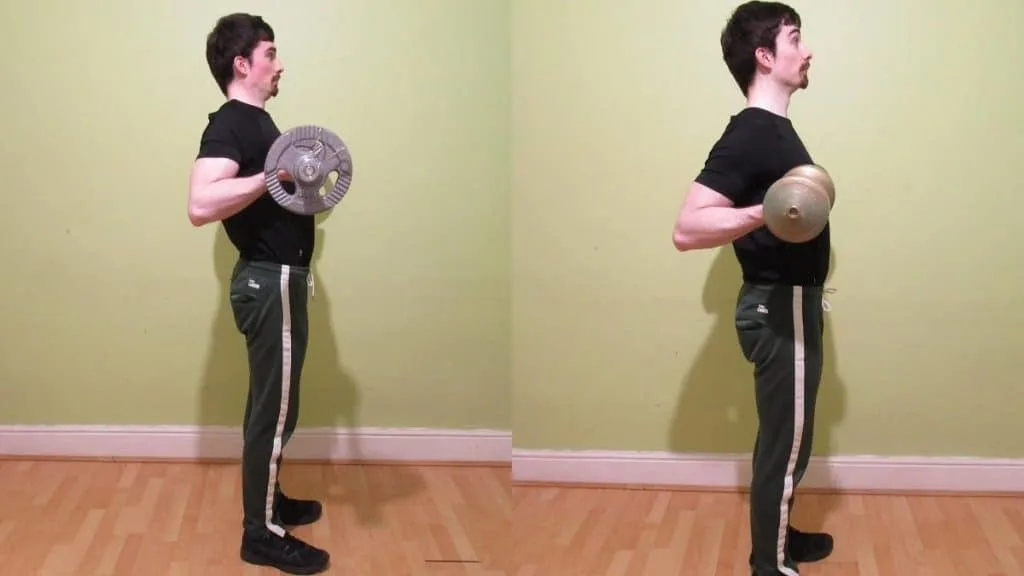
There are more than five different types of drag bicep curl. And while the barbell version will definitely enable you to lift the heaviest weights—and thus overload your biceps with the most resistance—the other drag bicep curl variations train the same muscles and may be more convenient for some lifters.
- Smith machine drag curl
- Dumbbell drag curls
- Reverse drag curls
- EZ bar drag curls
- Resistance band drag curl
- Cable drag curls
Drag curl FAQ
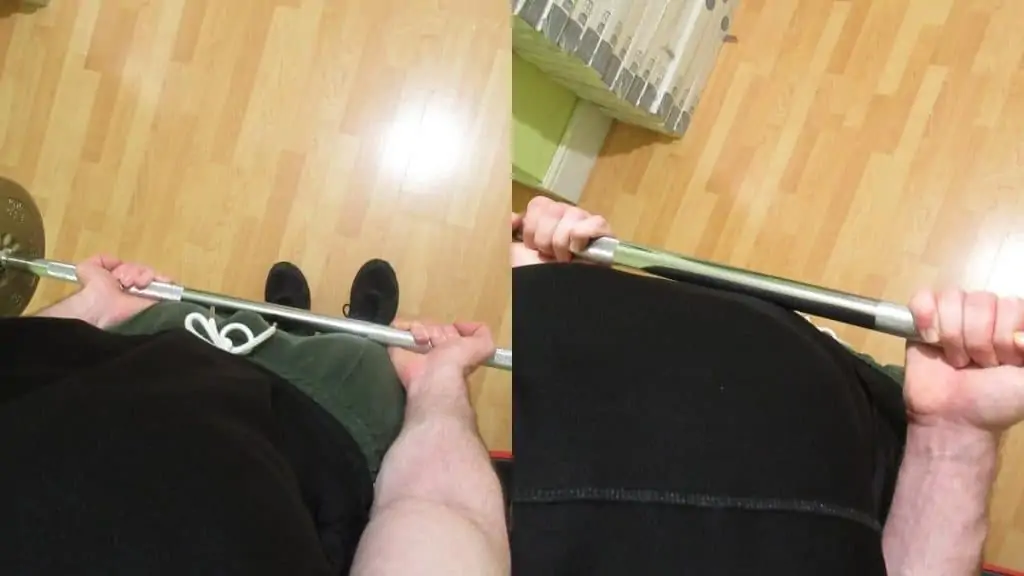
What muscles do drag curls work?
Standing drag curls primarily work the biceps brachii. Specifically, they emphasize the long head of this muscle because they have you curl with your arms behind your body, which shifts the tension onto the outer muscle fibers. Straight bar drag curls also train the brachialis, brachioradialis, and forearm flexors, but to a much lesser degree than the biceps.
Are drag curls good for the bicep peak?
Yes, barbell drag curls are very effective for building the bicep peak because they prioritize the development of the long head, which is the region of the biceps that contributes the most mass towards the peak.
Do drag curls work the traps?
Drag curls only work the traps if you elevate your scapula, which is to say if you shrug your shoulders. It’s okay to feel a small amount of trapezius activation when you’re lifting heavy, but if your traps are burning more than your biceps, then you’re using improper form.
Should you do heavy drag curls for the biceps?
Yes, if you want to gain muscle, then performing heavy drag curls is a great idea. Sets of 8-12 reps are recommended so that you can lift heavy enough to stimulate the growth of the fast-twitch muscle fibers while still performing enough reps so that you accumulate sufficient time under tension and training volume. [2]
Related Exercise: Plate curls
Conclusion: How effective are drag curls?
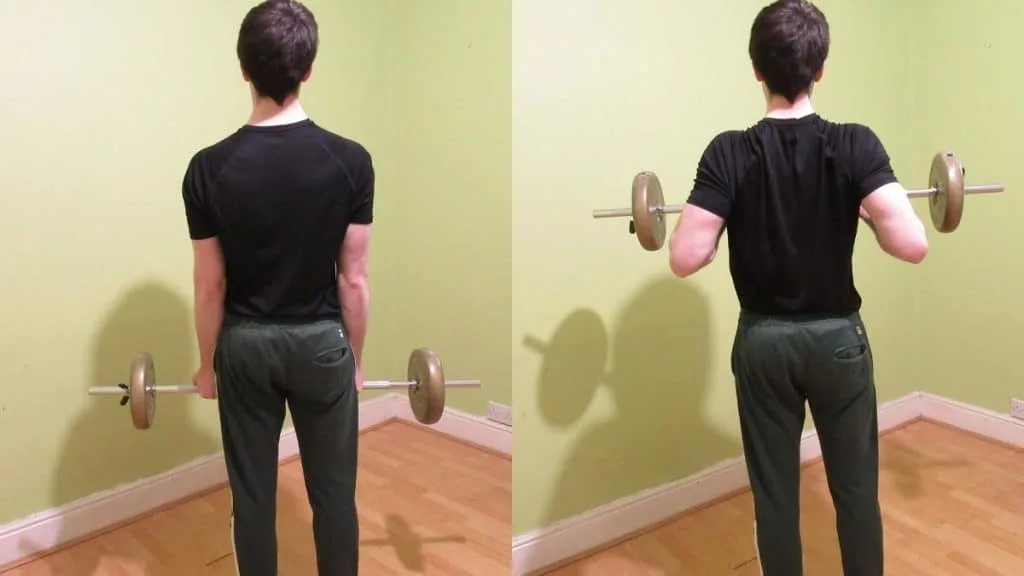
The barbell drag curl is an excellent exercise for novice lifters and advanced bodybuilders alike. After all, with the bar so close to your body, it’s extremely difficult to cheat the weight up, which means that your biceps have to do the majority of the work.
This makes the form easy to learn for beginners, but it also means that seasoned weight lifters can take their bicep development to the next level by effortlessly (technique-wise, not effort-wise) keeping the tension on the target muscle.
As mentioned, the bicep drag curl also produces an intense muscle pump, which can help your arms to look leaner and more vascular while you’re lifting.
The convenience of the body drag curl is another underrated aspect of this exercise. All you need is a barbell and a small space to stand in, which makes it particularly handy if you train at peak times or just generally go to a busy gym.
References
- Rivera, H. (2019, February 7). The Top 10 Rules Of Lifting Safety! Bodybuilding.Com. https://www.bodybuilding.com/fun/hugo34.htm
- Nuckols, G. (2020, January 26). The “Hypertrophy Rep Range” – Fact or Fiction? Stronger by Science. https://www.strongerbyscience.com/hypertrophy-range-fact-fiction/

